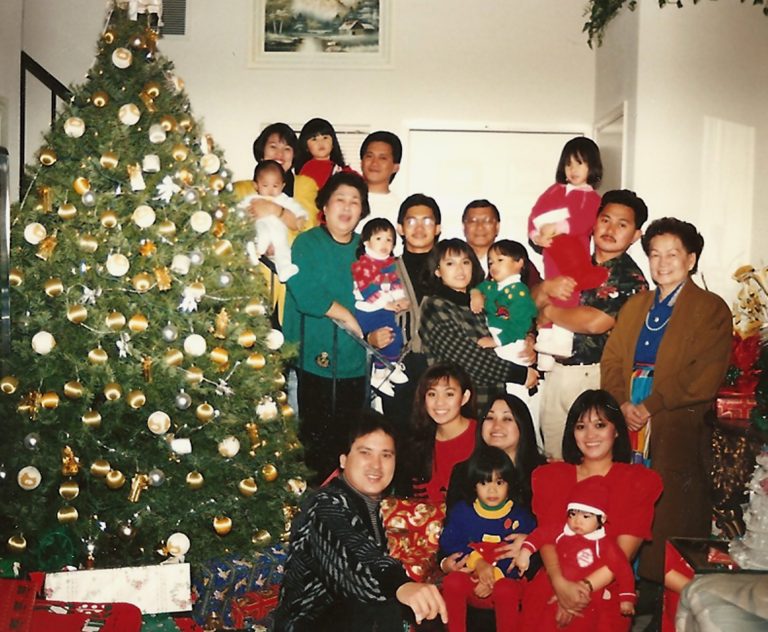This article was edited by Michelle Lai with permission from Mei-Ling and John Griffiths, authors of “Who is Chin Loong? A Chinese grandfather discovered” in Journeys into Chinese Australian Family History, Chinese Australian Family Historians of Victoria: Melbourne (2019), published by Sophie Couchman. Visit the CAFHOV website or purchase the full book here.
All images used in this article are from John and Mei-Ling Griffiths’ private collection.
Through her father Foon, Mei-Ling heard of her grandfather Ah Loong, who returned to China in the 1940’s, before Mei-Ling was born. In this article, we share the winding roads Mei-Ling and husband John undertook – with a bit of sleuthing – to trace her Chinese-Australian roots, and that of Ah Loong’s.
Who is Ah Loong?
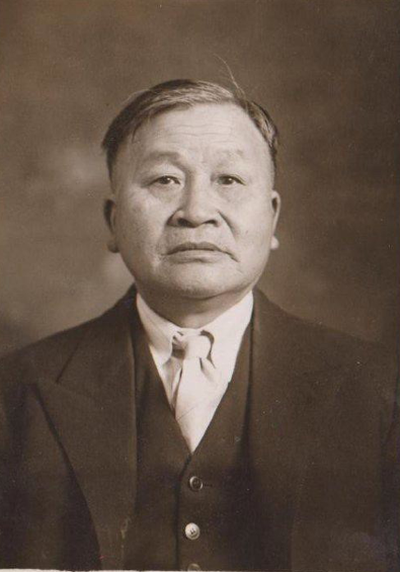
The smell of incense wafting from See Yup Temple, the chatter and lively atmospheres found at Queen Victoria Fruit and Vegetable Market. Mei-Ling fondly recalls memories of visiting these places with her father Foon while growing up in North Melbourne, Australia. Yet, when she wondered about her grandfather, she realized that little was known about him. Mei-Ling and her relatives only knew that Foon’s father had gone back to China in the 1940s, before Mei-Ling was born.
It often starts with questions, lingering thoughts that remain for years. “Who is Foon’s father? When did he first immigrate to Australia? What is my Chinese-Australian heritage?”
With the arrival of their grandchildren, Mei-Ling and John were determined to uncover the truth about Ah Loong and what truly happened to him. As a first step, they turned to the State Library of Victoria (SLV) and the National Archives of Australia (NAA) to wade through documents that reflect the rich history of Chinese immigration in Australia.
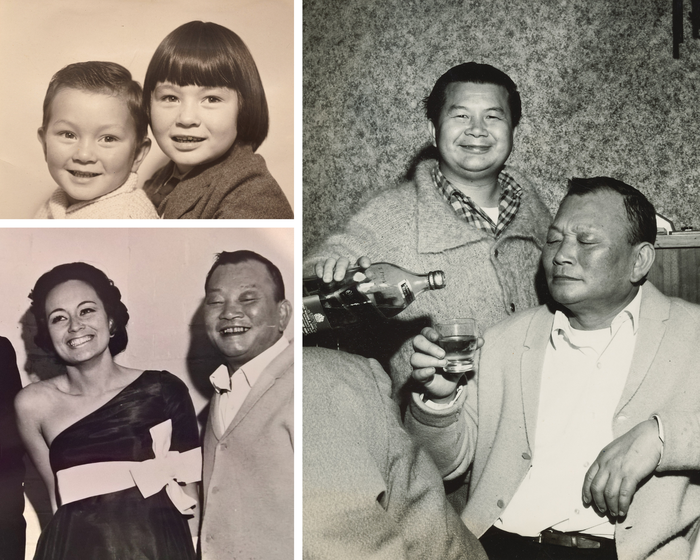
Also known as Gung Foon Chen, Mei-Ling’s father Foon arrived in Australia as a student with his younger brother Gung Sun Chen, or ‘Uncle George’. Both boarded the Nankin in Hong Kong and arrived in Brisbane on 21 October 1940. With this incidental discovery, the first step towards tracing Mei-Ling’s ancestry was taken.
Unfortunately, the name “Ah Loong” was by no means unique, meaning the couple’s searches in databases turned up hundreds of hits. Mei-Ling discovered that her cousin Donna, Uncle George’s daughter, was also attempting to trace her family tree, and had encountered the same brick wall. Frustrated but not defeated, Mei-Ling and John located the files of Mei-Ling’s father at the NAA, spanning from 1957 to 1965. The documents revealed that Mei-Ling’s grandfather, Chin Loong Chen, or Ah Loong, had owned a wholesale fruit and vegetable business at Queen Victoria Market. Excitingly, Ah Loong’s Alien Registration Certificate was also found: it was through this link that Mei-Ling and John discovered that her grandfather first arrived in Australia via Darwin, in 1890.
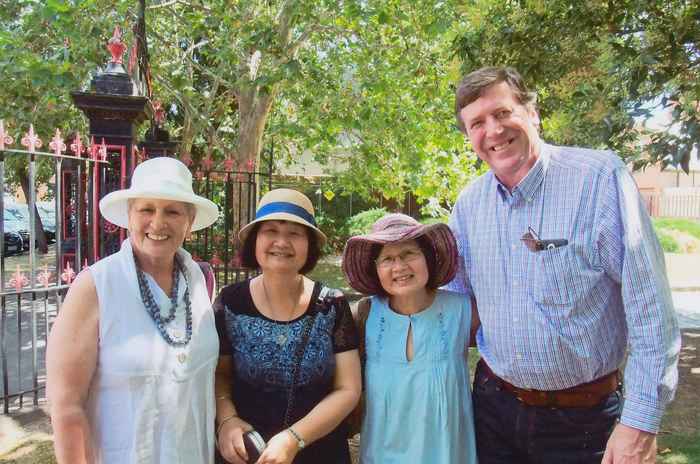
A series of false starts
Despite their best efforts, the couple still had no record of Ah Loong prior to the 1940s, so they reached out to members at the Chinese Australian Family History Group of Victoria (CAFHOV). With their help, they contacted the See Yup Society in Southern Melbourne, a benevolent association established in the mid-1800s to support the 1,000s of Chinese who arrived in the area from the See Yup area. The See Yup temple is home to 11,000 ancestral tablets that record the names of society members, and their village of origin, in Chinese characters.
With the help of a friend and See Yup society member, John and Mei-Ling arrived at the temple, armed with binoculars to scour the thousands of plaques lining the temple walls. They couldn’t believe their eyes when their friend noticed one yellowing plaque that belonged to “Chin Loong”, a man from Wong Chung village in Yamen, Xinhui County in Guangdong Province, China. Finally!
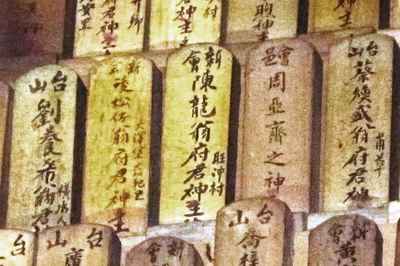
Armed with this bit of valuable information, Mei-Ling and John reached out to other Melbourne-based descendants from this village, who contacted the village to ask about Ah Loong. Sure enough, they received a letter from a villager in Wong Chong who confirmed that Chin Loong was from their village!
With these findings, John emailed My China Roots, asking our researchers to visit their newfound Wong Chung relatives and locate Ah Loong’s grave. But after spending a day investigating in Wong Chung, our researchers were puzzled to find that Ah Loong had never actually lived in the village, and that he was not recorded in the village zupu. No one seemed to know where he was buried, nor that he had returned to China in the first place.
Something was not right. Could it be that the Ah Loong of the See Yup tablet was not Mei-Ling’s grandfather at all? John and Mei-Ling were forced to go back to the drawing board. Thankfully, a follow-up trip to the NAA finally brought the breakthrough they had been hoping for: in a naturalization file for Mei-Ling’s half-brother, Gin Wah, the boy’s birth village referred to a village in Sanhe town, Taishan County.
A local fixer swiftly travelled down to Sanhe, confirming with village elders and in the zupu that Ah Loong was born and died here. Still, Mei-Ling and John did not wish to jump to any conclusions: how could they be sure this was not another namesake?
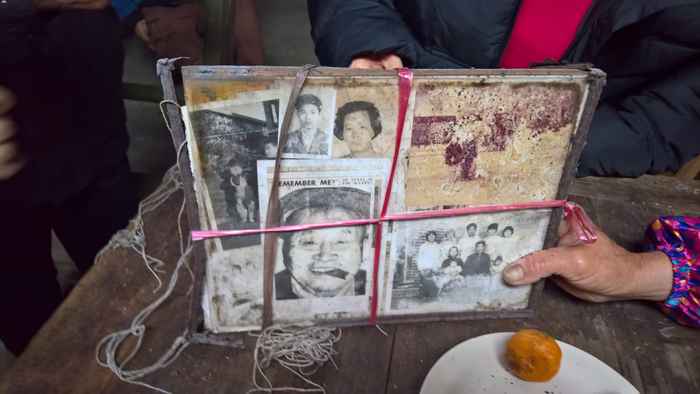
Their eureka moment came shortly after, when the researcher located a newspaper clipping from Ah Loong’s return to China, and family photos of Mei-Ling’s relatives in the ancestral house. This time, there was no doubt: they’d found the correct village!
A family reunion in Toisan
Thrilled at the news that Ah Loong had been found, John and Mei-Ling quickly scheduled a trip to his ancestral village. In March 2019, they returned to Sai Wah for Ch’ing Ming (Tomb-Sweeping Day), where they paid respects to Ah Loong’s grave, explored the family’s ancestral house, and feasted with relatives they never knew they had.
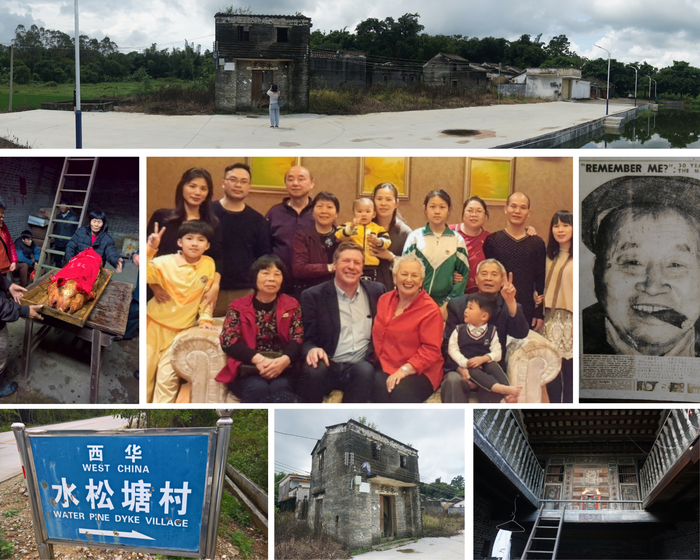
“Searching for Mei-Ling’s grandfather has been a fascinating experience with lots of twists and turns and a real journey of discovery”, John recounts. “Our research efforts have highlighted the importance of Chinese Australians to both Australian culture and history and the many varied contributions the Chinese have made to our society and way of life. This diverse culture provides a legacy that will enrich our grandchildren’s lives and allow them to understand their heritage. We are thankful to My China Roots for their help along the way!”
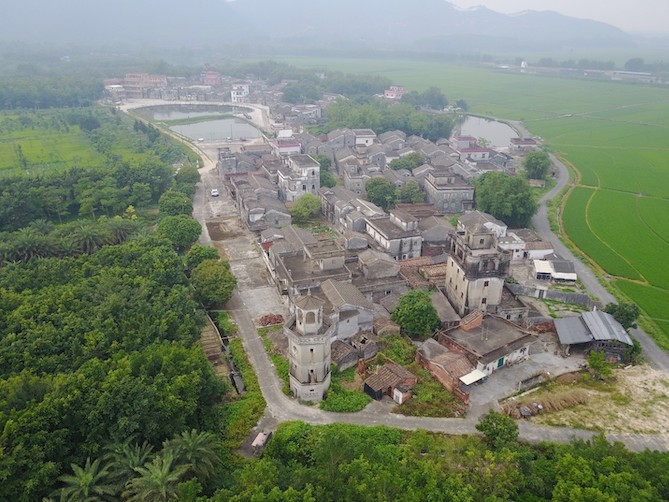
Find your ancestral village and connect with Chinese relatives!
If you are interested in finding your ancestral village and connecting with relatives in China, we would love to be of assistance. Our global team of researchers has helped hundreds of families discover their Chinese roots. Learn more about our services or go ahead and get in touch!
With the global pandemic, My China Roots is offering virtual tours packaged with our research trips to your ancestral village. Check out a demo here!


